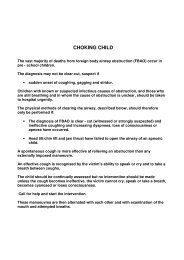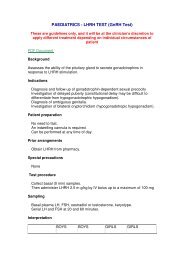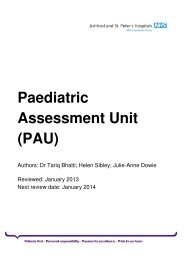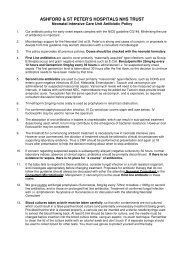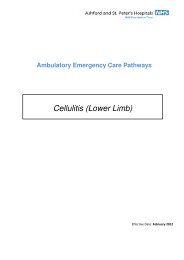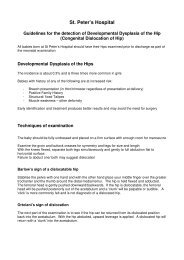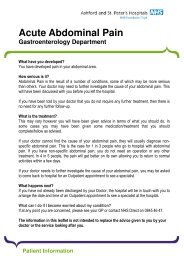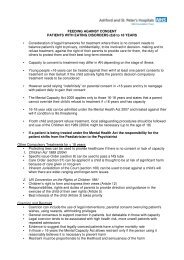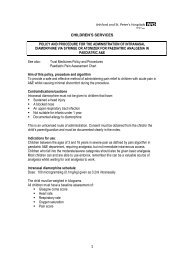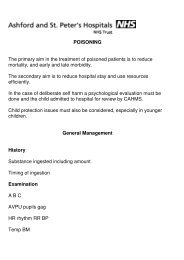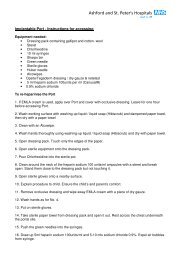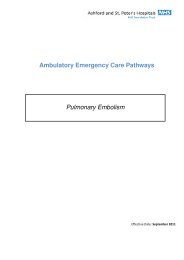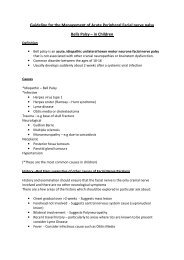AECP - Painless Obstructive Jaundice.pdf
AECP - Painless Obstructive Jaundice.pdf
AECP - Painless Obstructive Jaundice.pdf
Create successful ePaper yourself
Turn your PDF publications into a flip-book with our unique Google optimized e-Paper software.
4. Patient Information<br />
What is <strong>Jaundice</strong>?<br />
<strong>Jaundice</strong> is caused by any conditions or disorders that disrupt the functions of the liver.<br />
The main symptom is yellowing of the skin and the whites of the eyes due to the build-up of a<br />
substance called bilirubin in the blood and tissues of the body.<br />
Bilirubin is a waste product that's produced during the normal breakdown of red blood cells. The liver<br />
combines bilirubin with bile and it's released into the digestive system and passed out of the body in<br />
urine or stools. It is bilirubin that gives urine its light yellow colour and stools their dark brown colour.<br />
Other symptoms may include itching, pale coloured urine and/or stools and, in sever cases,<br />
confusion or reduced levels of consciousness.<br />
How did I get it?<br />
There can be multiple causes for <strong>Jaundice</strong> and the pathway you have commenced today (including<br />
any investigations and treatments) will enable your doctor to understand the cause of your <strong>Jaundice</strong><br />
which they will be able to discuss with you.<br />
How will it be treated?<br />
Your course of treatment will depend on the outcome of the investigations and your forthcoming<br />
appointment.<br />
If you have been itching, you may have been prescribed anti-histamine that will work to reduce/stop<br />
that itching.<br />
What happens next?<br />
You will be contacted by the hospital to arrange an appointment date and time with your Doctor. At<br />
this appointment, they will discuss your condition with you and answer any questions you may have.<br />
What can I do if I become worried about my condition?<br />
If at any point you feel that your condition has worsened or there are any signs of bleeding or<br />
confusion, please see your GP in the first instance if possible, or otherwise, return to A&E.<br />
The information in this leaflet is not intended to replace the advice given to you by your<br />
doctor or the service looking after you.



